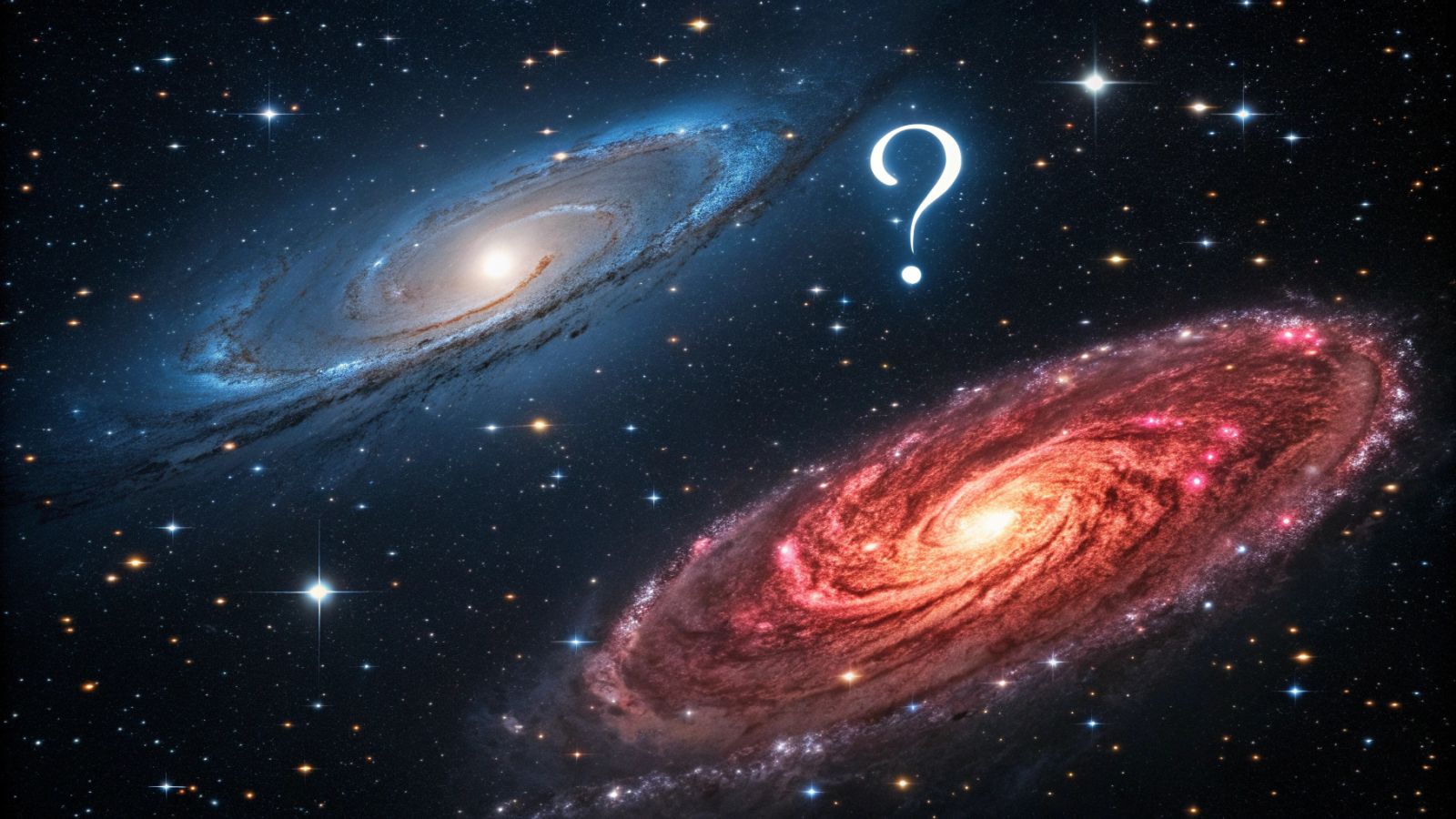A new category of galaxies that contradicts current models 🔭
Follow us on Google News (click on ☆)
Galaxies have long been classified into two types: blue ones, young and active, and red ones, old and inactive. Charles Steinhardt, a professor at the University of Missouri, proposes a third category: red star-forming galaxies. Despite their reddish appearance, these galaxies continue to give birth to stars, primarily low-mass ones.

According to a study published in The Astrophysical Journal, these red star-forming galaxies may have played a more significant role than expected in the history of the Universe. This discovery challenges current theories about galaxy evolution and star formation. It also suggests that the Universe may have produced more stars than previously thought.
Post-starburst galaxies, known for abruptly ceasing star formation after an intense period, might actually belong to this new category. Steinhardt proposes that some of them slowly form red stars rather than experiencing a sudden burst. This hypothesis could require a revision of the definition of post-starburst galaxies.
To further this research, Steinhardt and his team plan to use data from the European Space Agency's Gaia satellite. These studies could provide new insights into star formation and galaxy evolution, opening new perspectives in astronomy.
The implications of this discovery are vast. Not only could it alter our understanding of galaxy lifecycles, but it might also influence how we measure star formation throughout the history of the Universe. Future studies will be crucial to confirming these hypotheses.
In the meantime, the scientific community remains attentive to ongoing research results. This work could well rewrite part of the Universe's handbook.
What is a post-starburst galaxy?
A post-starburst galaxy is one that experienced an intense period of star formation before abruptly stopping. These galaxies are often the result of collisions or mergers between galaxies, which trigger a surge of star births.
After this active phase, post-starburst galaxies exhaust their gas and cease forming new stars, becoming red and inactive galaxies. However, the new category proposed by Steinhardt suggests that some might continue forming stars, albeit in a different way.
This distinction is crucial for understanding galaxy evolution and the processes governing their lifecycle. It could also help explain certain observations that don't align with current models.
How is star formation measured in galaxies?
Star formation in galaxies is typically measured by observing the light emitted by young stars and star-forming regions. Young, massive stars emit intense blue light, while older, less massive stars appear redder.
Astronomers also use indicators like the presence of molecular gas, essential for star formation. However, the discovery of red star-forming galaxies complicates this picture, as they produce low-mass stars that are less visible.
This new galaxy category may thus require the development of new methods to accurately measure star formation. Such advances would be essential for better understanding the history and evolution of the Universe.